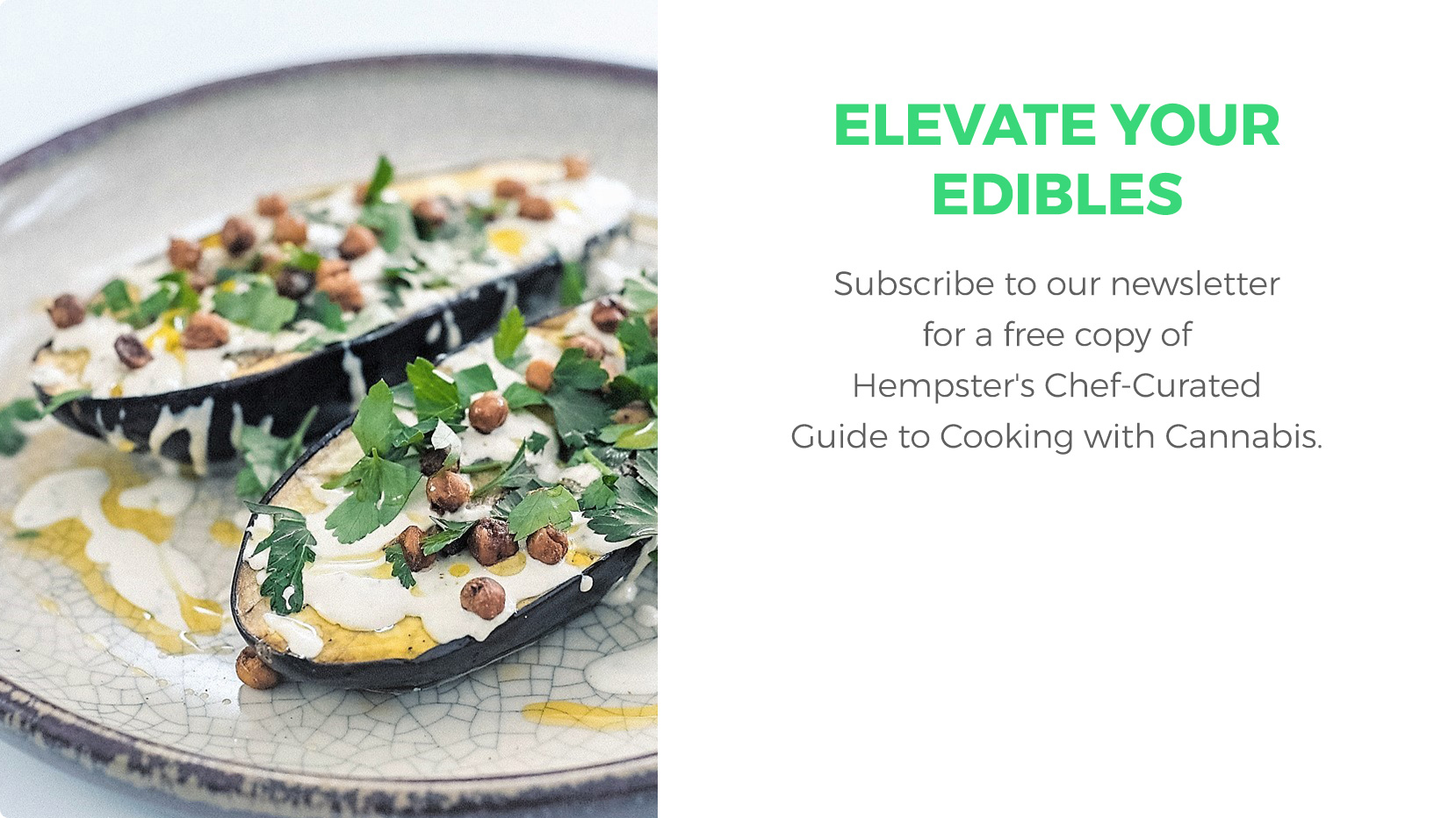Pairing Weed and Food: 5 Chef-Approved Tips for Cooking with Cannabis
Cannabis is an experiential ingredient, but it’s also it’s a herb. Just like basil, parsley and thyme, it contains terpenes, aromatic compounds that give each strain its unique scent and flavour.
From a culinary perspective, cooking with cannabis can be as rewarding as cooking with any other herb – perhaps even more rewarding when you consider the experience it provides.
“I love that you can make a meal with cannabis that is also your medication – what other ingredient can do that?” asks Ronnie Fishman, Hempster’s culinary director and resident chef. “But I also think cannabis doesn’t get the attention it deserves for its flavours, which can add so much to your cooking.”
Here are Chef Ronnie’s tips for maximizing flavour when you cook with cannabis:
Know your terpenes
Each cannabis strain contains a unique mix of terpenes. Increasingly, licensed producers are listing dominant terpenes alongside attributes like cannabinoid content, since terpenes provide cannabis with therapeutic properties as well as scents and flavours.
Some common terpenes found in cannabis include myrcene (also present in thyme, lemongrass and mango), limonene (found in citrus plants), pinene (pine, rosemary), linalool (lavender, cilantro, basil) and caryophyllene (black pepper, cloves). Once you know the terpenes you’re working with, you can start thinking about how to pair them with food.
Use your nose
Not sure which terpenes you’re working with? Don’t worry about it – your nose knows what it’s doing. Simply hold your preferred strain or cannabis-infused oil near the other ingredients you’re cooking with, and take a long, deep sniff. Do they smell delicious together? If so, they’ll taste good together, too. If not, you may need to tweak your recipe, or try a different strain for your base infusion.
Another way to understand the flavours in your cannabis is to vaporize some before using it in an infusion. Note the flavours with every inhale, and make sure you like them. “It’s just like cooking with wine,” says Chef Ronnie, “you should always use a strain you like. If you enjoy the flavour when you’re vaping it, you’ll like it when you’re eating it, too.”
Complement or contrast
A citrusy-smelling strain will naturally complement a citrus dish, or you can use it to add contrast to a savoury, rich dish like risotto. Strains with lots of linalool taste nice in chocolate and desserts, peppery caryophyllene-rich strains work well anywhere black pepper does, like on steak orburger, while pinene-dominant strains are perfect for pesto, pasta and for replacing the flavour of gin in cannabis mocktails.
Start with a good infusion
It’s a shame that so many people associate cannabis edibles with a grassy, green flavour, says Chef Ronnie. “That gross flavour in your old high school brownies isn’t cannabis,” she says, “it’s chlorophyll.”
Infuse your oil or butter properly, and it should taste like the terpenes that came with the plant – whether they are citrusy, floral, piney or musky. But if your final product looks and tastes too green, you probably over-squeezed the plant matter during the straining process, releasing too much chlorophyll, and overwhelming the other flavours.
Next time, “just let gravity do its work,” says Chef Ronnie and don’t squeeze the cheesecloth too hard when you’re removing plant matter from your infusion. (Not sure what we’re talking about here? Check out our recipe for cannabis-infused oil and you’ll see what we mean.)
Plan a feeling
Once you’ve got your flavours down, it’s time to consider the experience of the cannabis, choosing sedating strains to infuse the base oil for a late night snack, and energizing infusions for breakfast or an all-night dinner party. It’s that ability to provide flavours and experiences that makes cannabis a culinary herb like no other.
Ready to take elevate your edibles? Sign up for The Hempster Report to receive a free digital download of our Complete Guide to Cooking with Cannabis.

